- May 29, 2020
- 17
Hi everyone, I've been active in this forum for quite a bit of time but this is the first time I'm posting something.
TLDR
I ran a memory load test in a VM to monitor how much memory BD uses under load, it turns out to be way lesser than what it uses during idle. It uses around 90-100MB under load.
Full explanation:
We have all known for a long time that Bitdefender is RAM heavy and there have been scenarios where it would consume more than 500MB. Even recently I saw someone having a memory issue in this forum with RAM usage in GBs (probably a worst case outlier scenario). I have personally tested this in VMs and local system (HDD and SSD) systems and I found that the memory consumption would settle around 250-300MB which I consider as a little too high as compared to some competitors (Avast, Kaspersky < 100MB). But almost all of the results from testing usually put the performance as great and say there is no impact, these results are further voiced by many of the users in this forum who find Bitdefender to be light enough and even BD themselves claim their protection does not impact PC performance and they are so proud of their Photon technology which they say adapts the program to the configuration of the computer. So I decided to put this to test, can it really adjust it's resource usage based on load ? Let's find out.
I created a VM, specs as follows :
OS : Windows 10 20H2 64 bit
Software : Removed Windows 10 bloatware (the pinned games, all the removable UWP apps) and no other software installed.
Browser : Edge with UBlock Origin
CPU : i7 8550U (2 cores for VM)
RAM : 4GB
Storage: 50 GB
Expectations:
Installed Bitdefender Antivirus Plus 2021 and updated it to the latest version, 25.0.19.75 and ran a complete system scan once. My work usually has multiple browsers open, each with multiple tabs and an IDE running a Node JS server and all these kind of push my host system's memory to 80-90% most of the times, but still the system would be responsive, that is the result that I'm looking forward to with the test in VM.
The test procedure :
1) Check the idle usage of BD after bootup.
2) Update BD to latest definitions.
3) Open 100 tabs in Microsoft Edge using TrackThis initiative from Mozilla.
4) Monitor the CPU and Memory usage of BD as the browser pushes the limit by consuming more than 2GB of memory.
5) Switch between tabs and couple of Windows Explorer tabs and see if system is responsive.
6) Open another Edge Window and download Eicar file to check how quickly BD responds to the threat under load.
I ran this load test twice and results are reproducible.
Results:
1) The idle usage of BD after bootup would be around 150-250MB when no other program is running.
2) When updating BD, the CPU, Memory and disk usage will experience a noticeable but a short spike, this can be more pronounced on HDD systems. In SSD, it is done without much impact.
3) Once the browser reaches 2-2.5GB of memory usage, BD drops its resource usage to the following levels
During Load :
Lowest recorded usage : 60MB
Highest recorded usage : 140MB
Average recorded usage : 90-100MB
After Load test:
Once browser is closed and memory is freed, BD stays around 110MB and slowly increases its memory usage to normal usage of 200-250MB, sometimes even lower around 150MB.
4) The system remains operational with slight delays when switching tabs, honestly that is expected for a system with 4GB memory and 100 tabs. BD's UI is accessible and responsive.
5) The Eicar download is blocked as expected without any delays.
You can take a look at the screenshots of the task manager. Load set 1 represents run #1 and Load set 2 represents run #2. The other idle screenshots are taken randomly after bootup of the system. The post load screenshot is taken few seconds after load test is done and memory is released.
Summary:
As they say, BD literally took the "free memory=wasted memory" idea and optimized their AV to use it when available and release it when other processes demand it. If you like BD but stayed away from it due to memory usage scare, I guess you can give it a try and as long as you don't feel the excessive RAM usage is affecting your work, it should be good to go. Also, I like BD's dark theme! I may do a full review of it when I get the time.
P.S : I'm not a fan of any particular AV, this is a test that I did out of curiosity. I'm currently running customized installation of avast! in my host system and it always uses less than 100MB of memory and does not have any spikes during updates, I like their way of streaming updates that are released continuously every 5-10 mins. However I have no personal bias with any AV, I have used Windows Defender with Hardening and KSCF, I keep changing once in a while when I feel like it!
Feedback is appreciated.
TLDR
I ran a memory load test in a VM to monitor how much memory BD uses under load, it turns out to be way lesser than what it uses during idle. It uses around 90-100MB under load.
Full explanation:
We have all known for a long time that Bitdefender is RAM heavy and there have been scenarios where it would consume more than 500MB. Even recently I saw someone having a memory issue in this forum with RAM usage in GBs (probably a worst case outlier scenario). I have personally tested this in VMs and local system (HDD and SSD) systems and I found that the memory consumption would settle around 250-300MB which I consider as a little too high as compared to some competitors (Avast, Kaspersky < 100MB). But almost all of the results from testing usually put the performance as great and say there is no impact, these results are further voiced by many of the users in this forum who find Bitdefender to be light enough and even BD themselves claim their protection does not impact PC performance and they are so proud of their Photon technology which they say adapts the program to the configuration of the computer. So I decided to put this to test, can it really adjust it's resource usage based on load ? Let's find out.
I created a VM, specs as follows :
OS : Windows 10 20H2 64 bit
Software : Removed Windows 10 bloatware (the pinned games, all the removable UWP apps) and no other software installed.
Browser : Edge with UBlock Origin
CPU : i7 8550U (2 cores for VM)
RAM : 4GB
Storage: 50 GB
Expectations:
Installed Bitdefender Antivirus Plus 2021 and updated it to the latest version, 25.0.19.75 and ran a complete system scan once. My work usually has multiple browsers open, each with multiple tabs and an IDE running a Node JS server and all these kind of push my host system's memory to 80-90% most of the times, but still the system would be responsive, that is the result that I'm looking forward to with the test in VM.
The test procedure :
1) Check the idle usage of BD after bootup.
2) Update BD to latest definitions.
3) Open 100 tabs in Microsoft Edge using TrackThis initiative from Mozilla.
4) Monitor the CPU and Memory usage of BD as the browser pushes the limit by consuming more than 2GB of memory.
5) Switch between tabs and couple of Windows Explorer tabs and see if system is responsive.
6) Open another Edge Window and download Eicar file to check how quickly BD responds to the threat under load.
I ran this load test twice and results are reproducible.
Results:
1) The idle usage of BD after bootup would be around 150-250MB when no other program is running.
2) When updating BD, the CPU, Memory and disk usage will experience a noticeable but a short spike, this can be more pronounced on HDD systems. In SSD, it is done without much impact.
3) Once the browser reaches 2-2.5GB of memory usage, BD drops its resource usage to the following levels
During Load :
Lowest recorded usage : 60MB
Highest recorded usage : 140MB
Average recorded usage : 90-100MB
After Load test:
Once browser is closed and memory is freed, BD stays around 110MB and slowly increases its memory usage to normal usage of 200-250MB, sometimes even lower around 150MB.
4) The system remains operational with slight delays when switching tabs, honestly that is expected for a system with 4GB memory and 100 tabs. BD's UI is accessible and responsive.
5) The Eicar download is blocked as expected without any delays.
You can take a look at the screenshots of the task manager. Load set 1 represents run #1 and Load set 2 represents run #2. The other idle screenshots are taken randomly after bootup of the system. The post load screenshot is taken few seconds after load test is done and memory is released.
Summary:
As they say, BD literally took the "free memory=wasted memory" idea and optimized their AV to use it when available and release it when other processes demand it. If you like BD but stayed away from it due to memory usage scare, I guess you can give it a try and as long as you don't feel the excessive RAM usage is affecting your work, it should be good to go. Also, I like BD's dark theme! I may do a full review of it when I get the time.
P.S : I'm not a fan of any particular AV, this is a test that I did out of curiosity. I'm currently running customized installation of avast! in my host system and it always uses less than 100MB of memory and does not have any spikes during updates, I like their way of streaming updates that are released continuously every 5-10 mins. However I have no personal bias with any AV, I have used Windows Defender with Hardening and KSCF, I keep changing once in a while when I feel like it!
Feedback is appreciated.
Attachments
-
 BD Home dark.PNG168.7 KB · Views: 1,387
BD Home dark.PNG168.7 KB · Views: 1,387 -
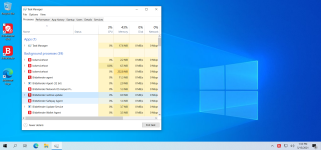 BD idle 5.png378.5 KB · Views: 1,055
BD idle 5.png378.5 KB · Views: 1,055 -
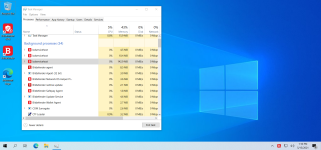 BD- Idle.png380.6 KB · Views: 1,168
BD- Idle.png380.6 KB · Views: 1,168 -
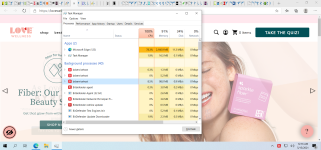 BD Load Set 1 (1).png598 KB · Views: 1,144
BD Load Set 1 (1).png598 KB · Views: 1,144 -
 BD Load Set 1 (2).png145.3 KB · Views: 1,043
BD Load Set 1 (2).png145.3 KB · Views: 1,043 -
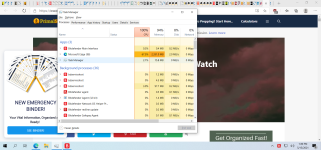 BD Load Set 2 (1).png411.6 KB · Views: 915
BD Load Set 2 (1).png411.6 KB · Views: 915 -
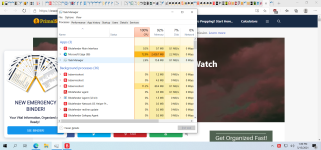 BD Load Set 2 (2).png416.3 KB · Views: 980
BD Load Set 2 (2).png416.3 KB · Views: 980 -
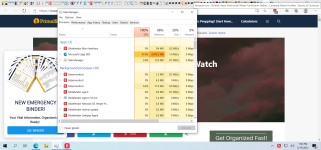 BD Load Set 2 (3).png415.6 KB · Views: 903
BD Load Set 2 (3).png415.6 KB · Views: 903 -
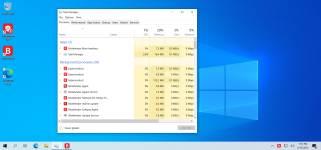 Post Load.png363.8 KB · Views: 914
Post Load.png363.8 KB · Views: 914
Last edited:



